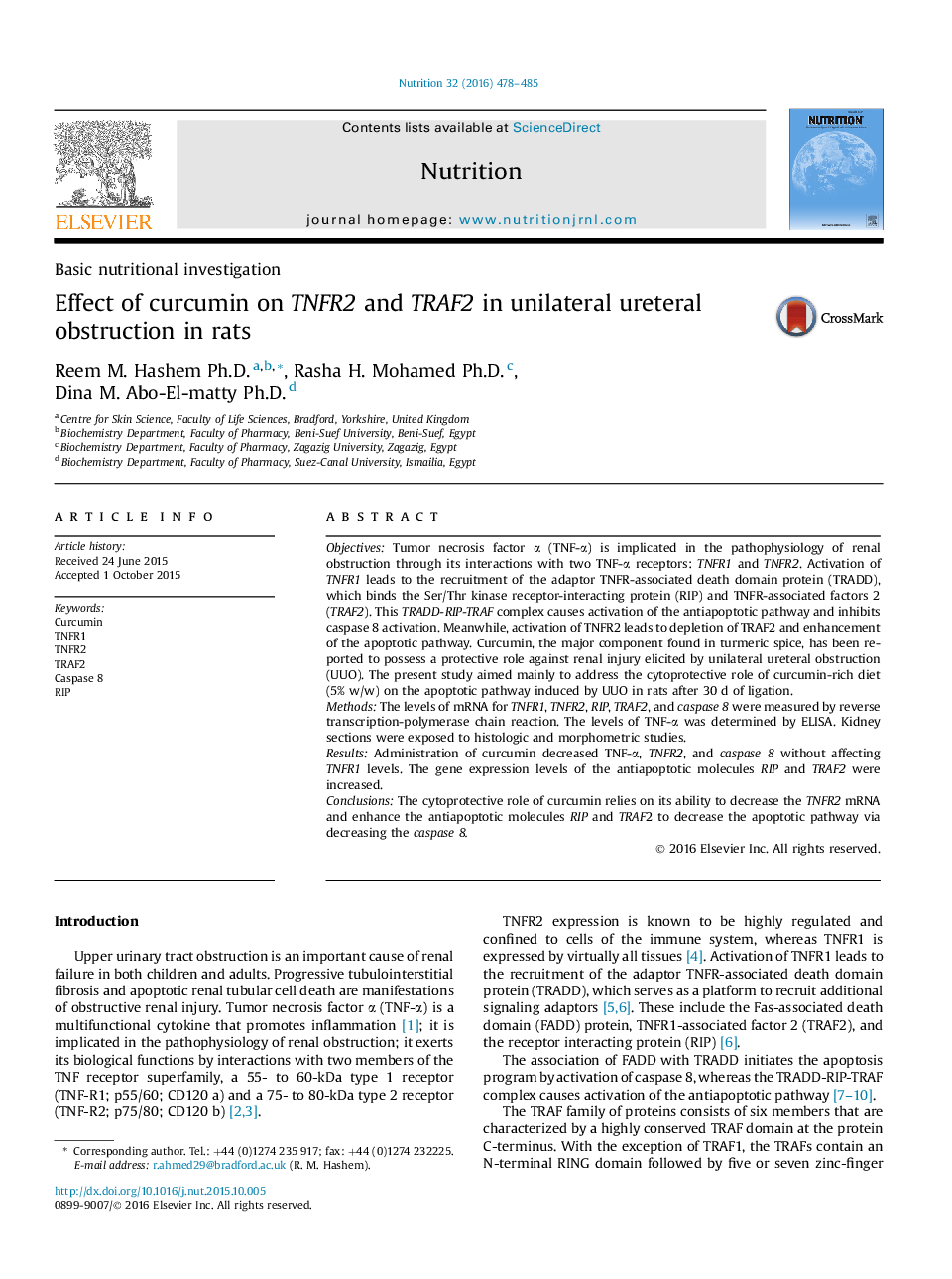| Article ID | Journal | Published Year | Pages | File Type |
|---|---|---|---|---|
| 3276213 | Nutrition | 2016 | 8 Pages |
•Curcumin-rich diet decreased TNF-α and TNFR2 mRNA in UUO rats.•Curcumin did not affect TNFR1 mRNA and increased the ratio of TNFR1/TNFR2.•TNFR1 recruits the adaptor TRADD, which binds the RIP and TNFR2 in curcumin group.•TRADD-RIP-TRAF complex activates the antiapoptotic pathway and inhibits caspase 8.•Curcumin decreased TNFR2 and increased TRAF2 to decrease the apoptotic pathway.
ObjectivesTumor necrosis factor α (TNF-α) is implicated in the pathophysiology of renal obstruction through its interactions with two TNF-α receptors: TNFR1 and TNFR2. Activation of TNFR1 leads to the recruitment of the adaptor TNFR-associated death domain protein (TRADD), which binds the Ser/Thr kinase receptor-interacting protein (RIP) and TNFR-associated factors 2 (TRAF2). This TRADD-RIP-TRAF complex causes activation of the antiapoptotic pathway and inhibits caspase 8 activation. Meanwhile, activation of TNFR2 leads to depletion of TRAF2 and enhancement of the apoptotic pathway. Curcumin, the major component found in turmeric spice, has been reported to possess a protective role against renal injury elicited by unilateral ureteral obstruction (UUO). The present study aimed mainly to address the cytoprotective role of curcumin-rich diet (5% w/w) on the apoptotic pathway induced by UUO in rats after 30 d of ligation.MethodsThe levels of mRNA for TNFR1, TNFR2, RIP, TRAF2, and caspase 8 were measured by reverse transcription-polymerase chain reaction. The levels of TNF-α was determined by ELISA. Kidney sections were exposed to histologic and morphometric studies.ResultsAdministration of curcumin decreased TNF-α, TNFR2, and caspase 8 without affecting TNFR1 levels. The gene expression levels of the antiapoptotic molecules RIP and TRAF2 were increased.ConclusionsThe cytoprotective role of curcumin relies on its ability to decrease the TNFR2 mRNA and enhance the antiapoptotic molecules RIP and TRAF2 to decrease the apoptotic pathway via decreasing the caspase 8.
